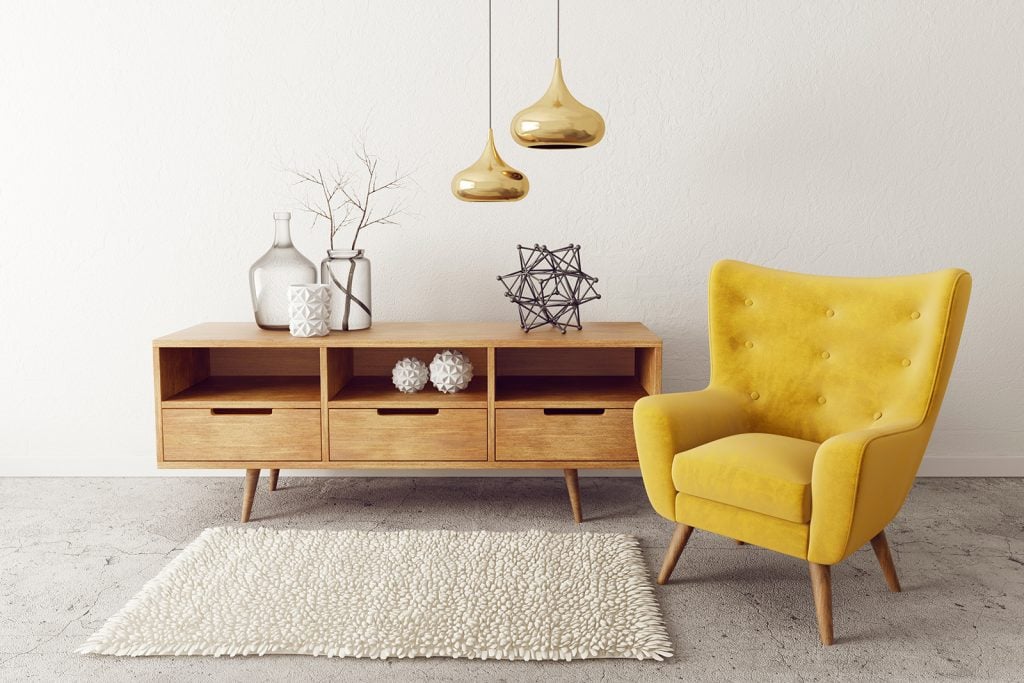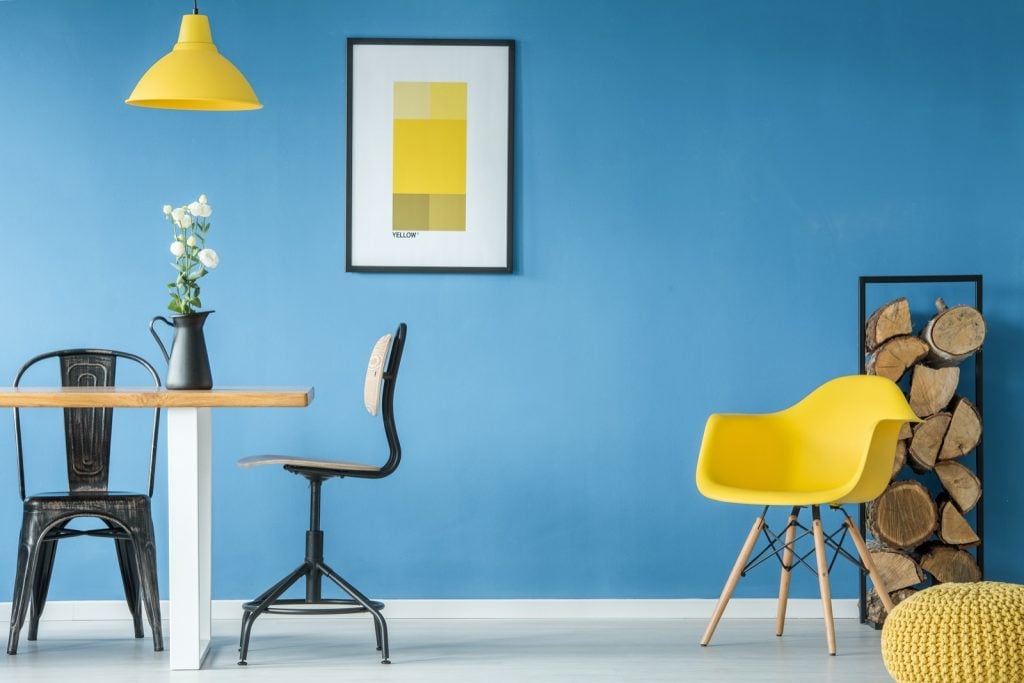What Accent and Percent of Blue Is the Color Turquoise

Accent colors are used to bring personality and cheer to an otherwise dull color scheme. They can be bold or vivid because they are used so sparingly, but their main job is to highlight the dominant color. This means that they can be in contrast to the dominant color or complement it. Both will work beautifully. It simply depends on the results you are looking for. Even dark colors and neutrals can be accent colors.
You will hear about accent colors most frequently in home decorating and design, but they are also used in photography and painting. Regardless of where you use an accent color, the rules remain the same.
What is an Accent Color?
The accent color is used in small amounts to add interest to the overall color scheme. Accent colors complement or contradict the main color to create an emotional response. Regardless of whether your accent colors match or contradict the main color, you want them to emphasize the dominant color. They should never distract from it.
Accent Color Principles

Use a small number of accent colors throughout your home. You don't need a large variety of colors to make your home appear colorful. Once you pick one or two accent colors you enjoy, use the same ones throughout the house. Having the same accent colors in several rooms creates flow.
Choose colors that you know will work in at least three of your main rooms. The goal is to be able to move accessories from one space to another and have everything still look coordinated. You should not feel a change in emotion as you walk through the house.
The main accent color should be used at least three times in a single room. Use the color in different areas of that room in order to draw your eye around the area. Don't limit the use of accent colors to small pieces. You can use them on any painted surface, in the upholstery, and the artwork.
Stick with all clean colors or all shades to keep all of the accent colors coordinated. Clean colors are on the outer circle of the color wheel. They are crisp and clear. Grayed-out shades are on the inner circle of a paint or subtractive color wheel. These colors are muted. Mixing a shade with a clean color can be hard to do. If not done properly, the result can look incomplete and confusing.
Why are Accent Colors Important?

Accent colors are the best solution when it comes to adding personality to any space. The smallest splash of an accent color can bring joy to a room while brightening the area as well.
Have fun with your accent colors. Don't be afraid to go bold. Since this is only a small portion of a room, it is easy enough to change the color if you are not happy with your first attempt.
Using Accent Colors in Your Home
Interior designers use proportion as a rule when painting or decorating. You should have 60% of a room used in the main or dominant color. Secondary color should cover 30% of the room. The last 10% is saved for the accent color. When it comes to where those accent colors should be used, your imagination is the limit.
Highlighting Architectural Details
When trying to use accent colors in the home, consider using them to highlight architectural details such as trim, paneling, and stair rails. It only takes a few splashes of color to make a huge impact. For example, you could paint your walls in a neutral color such as gray. A great way to find the perfect accent color is to look at the color wheel. Using a color that is opposite from your main color will work nicely as an accent, but gray isn't on the wheel. This is because there is no opposite color to gray in the color wheel. Gray is a combination of colors. That is why some grays can have a blue tint to them while others have a hint of red. When using the color wheel, determine what color is in your gray and pick a color opposite from that.
Use Accent Colors on Surfaces

Use your accent color on several smaller surfaces throughout the space instead of in one large area. Think about a bathroom. The walls can be painted in the main color while the accent color can be used on the vanity, window trim, and even the ceilings. This allows the accent color to work as a focal point.
Zone a Room With Accent Colors
A very traditional way to use an accent color in a room is to create an accent wall. Paint all of the walls with your dominant color. Choose one wall, preferably behind a bed or sofa, and paint it in the accent color. This immediately draws the eye in.
Accent Colors as Contrast
The accent color doesn't have to be the boldest color in the room. Think about a room that is painted in a solid dark blue or green. If you paint the alcoves in this room in a coordinating neutral or a crisp white, the contrast that is created will feel refreshing.
Adding Fun to Workspaces

Many people are now working from home or homeschooling their children. This has created the need for a designated workspace within the home. Whether it is a den, home office, or just a corner of a larger room, you can make a work area fun by adding an accent color. It doesn't take much. Paint a section of a wall in a bright color. It will open up the space and lift your spirits. Colors can actually stimulate the mind and make you more productive, so this could be helpful when working.
Adding Elegance With Accent Colors
Don't be afraid to use metallics as accent colors. Metallics are a fun way to add elegance to a space by balancing it with texture, brightness, and shine. Combining a glamorous metallic with a dark color creates instant drama.
Brighten Up Unexpected Places
Accent colors are perfect for brightening up spaces that are often overlooked. Paint cabinets, chest of drawers, or wardrobes in neutral colors on their exterior surfaces. Then when you open the doors, have a bright accent color inside. That unexpected pop of color will bring joy to an otherwise dull spot.
Accent Colors and Furniture

Using accent colors on furniture allows you to change a dull room into a beautiful and stylish home. Painting furniture pieces with an accent color allows you to freshen up older items. Be creative with stenciling too. This works wonderfully for those living in rentals or apartments where they are not allowed to paint the walls. A pop of color on the furniture lets your personality shine.
Choosing the Best Accent Colors
Start by developing a whole house color palette with the dominant shades you will be using the most often. Next, you can choose coordinating accent colors and add them to your palette. As you select paint, furnishings, and accessories, refer to your color palette to stay on track.
Accent colors are quite different than the dominant colors in your home. You may want the walls to be in a neutral color that is easy to live with since they will cover such large areas and are permanent. This traditionally becomes your dominant color.
Accent colors are less rigid. Take greater risk with these colors. Have fun since the accent colors are used in smaller pieces that can easily be switched out. Keep in mind that you don't need several accent colors to create a colorful home. Two or three bold choices used repeatedly will give you the feel of color you are looking for.
Additional Tips for Finding the Perfect Accent Colors

Think about your favorite accent pieces. Why do you like them? What color and texture are they? Is there an ongoing trend among them? The answer to these questions are clues to finding accent colors you will love.
Also consider whether you want your accent colors to stand out or blend in for a finished look. Do your favorite items tend to stand out? If so, you will enjoy accent colors that stand out.
In Conclusion
Accent colors are an important part of any color scheme. Don't underestimate their power. When used correctly, they can help the dominant color hold its own while bringing a cheerful and bright pop of color to what may otherwise be a bland landscape. While accent colors are most often thought of in home design, remember that the perfectly chosen accent color can make the main subject of a photograph or piece of artwork stand out beautifully.
pedersonminve1998.blogspot.com
Source: https://www.color-meanings.com/accent-colors/
0 Response to "What Accent and Percent of Blue Is the Color Turquoise"
Post a Comment